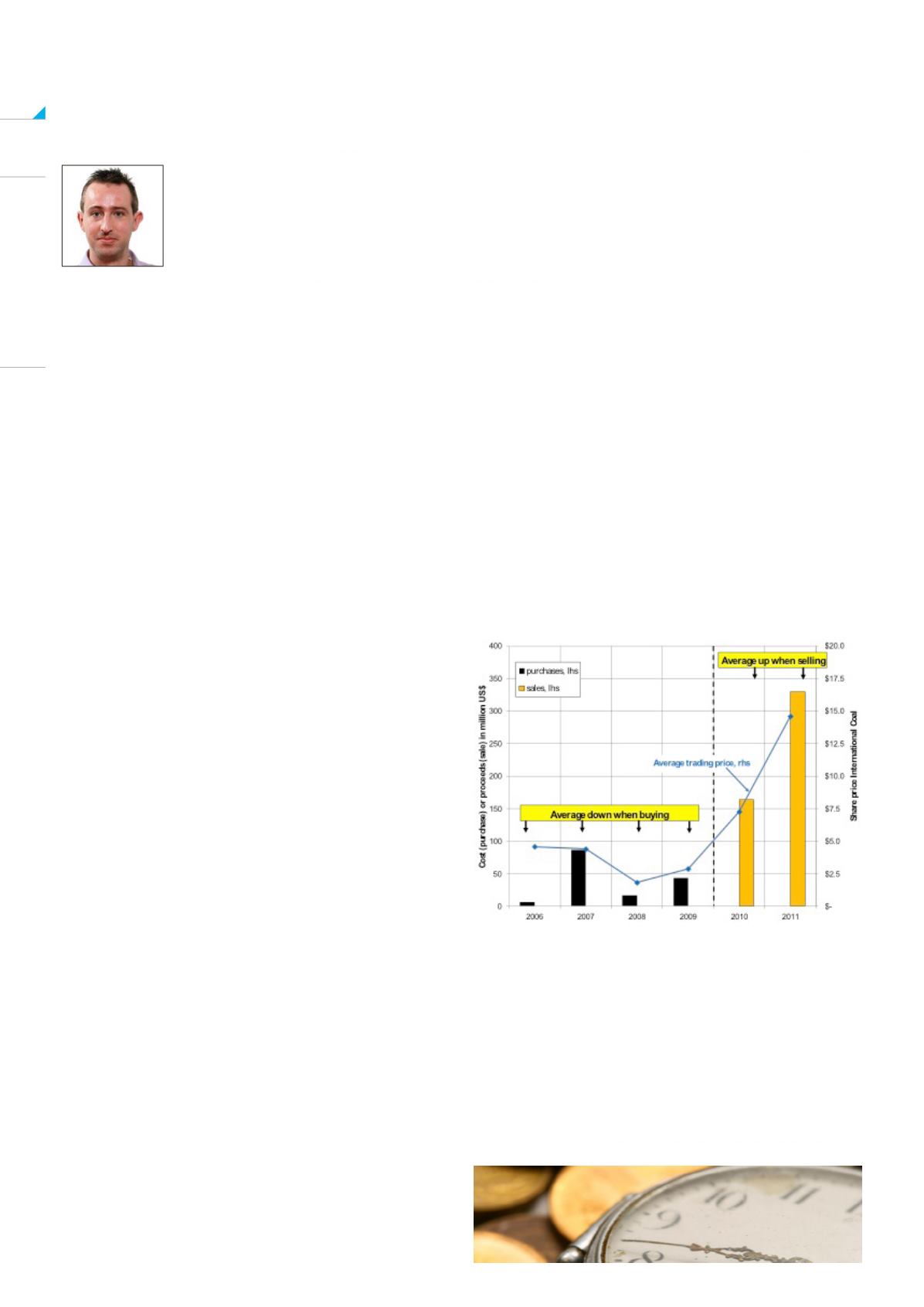
DIY Investor Magazine
/
2015 Issue
24
CLASSIC INVESTMENT
MISTAKES AND HOW TO AVOID THEM – PART 2
Frederik Vanhaverbeke
In this article we focus on three classic mistakes in
the last step of the investment process – buying and selling.
MISTAKE 1: TRYING TO SELL AT A PEAK OR BUY AT A
BOTTOM
Many investors think – wrongly – that successful
investors buy shares at their low point and sell them at
their peak. The idea that one can time buys and sells
with pinpoint precision is the product of a number of
psychological biases.
First of all, many think that stock markets are easier to
predict than they actually are. Second, human beings
tend to discern certain patterns in how share prices
move, whereas, in reality, most price movements are
more or less random. These convictions, coupled with
excess confidence, lead to the idea that it has to be
possible to apply some kind of method to time buys
and sells perfectly.
In a predictable world, timing would indeed be a matter
of logic; however, stock markets are anything but
predictable. Even the world’s most successful investors
think that perfect timing is impossible - who are we to
think otherwise?
Top investors don’t look for the perfect way to time
their purchases and sales, rather they are pragmatic
in making buy and sell decisions. They accept the fact
that a stock may go down after the purchase, or that a
stock may go up after a sale - their overriding concern
is whether the share is expensive or cheap compared
to its intrinsic value. They realise that it makes no sense
to keep an overvalued share, speculating that the price
could go even higher, and believe that it’s silly not to
buy a cheap share because the price might go down a
little bit more.
To avoid having to time purchases, top investors tend to
spread them over time and within a given price range.
Figure 1 illustrates how Prem Watsa – nicknamed
‘the Canadian Warren Buffett’ because he’s achieved
investment returns similar to Buffett’s – bought and
sold shares in International Coal between 2006 and
2011.
Watsa bought an initial small position in 2006 at $4.6,
after which he seriously increased that position in 2007
at a somewhat lower price of $4.4. When the share
slumped in 2008 in the middle of the credit crisis, he
added to his position at a price of $1.8 and in 2009
he took advantage of the low share price, buying an
additional package of shares at $2.9. As the diagram
shows, the share recovered spectacularly in 2010 and
2011, allowing Watsa to sell the position off gradually
with high profit at $7.3 in 2010 and $14.6 in 2011.
Seasoned bargain hunters understand that it is their
common plight to sell stocks too soon, particularly as
they find cheaper bargains elsewhere. If you hold on to
your stocks as they rise above their estimated worth,
you are joining a game of speculation and have left the
sphere of investing.
John Templeton


